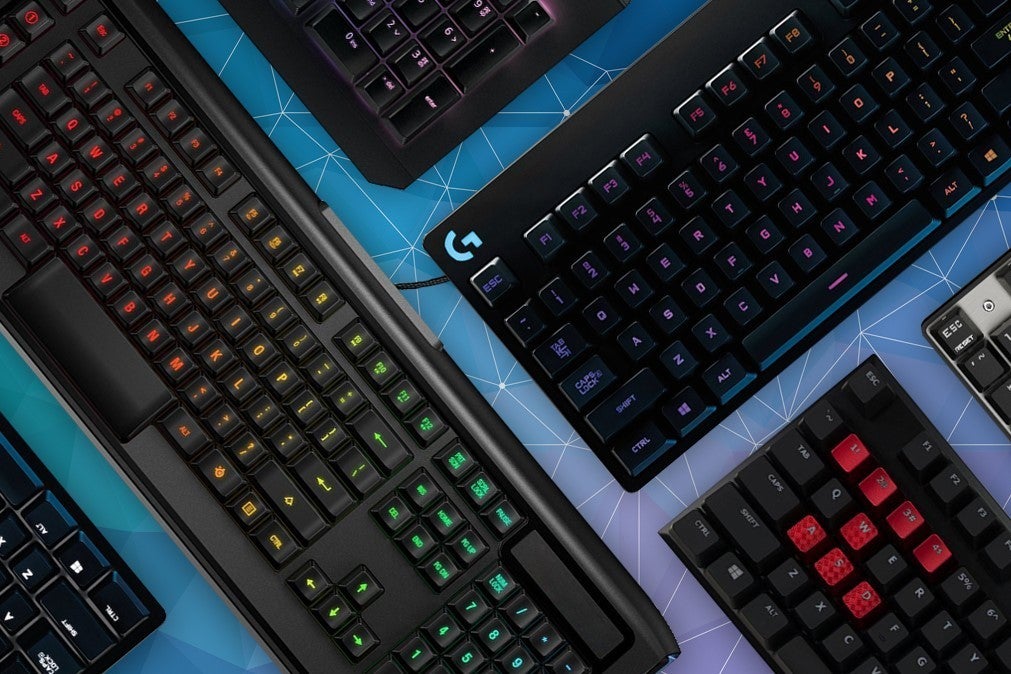You can use any old keyboard to play most PC games. But for better performance, more customization, and maybe even a little more fun, a keyboard designed specifically for games is a great investment.
But actually buying one can be a daunting experience. There are hundreds of options out there with a staggering array of features and price points — and that’s just the ones from the major brands. Which is where this guide comes in. We’ve tested the latest, greatest, and not-so-great gaming keyboards on the market, so you can find the best one for you and your battlestation.
Why you should trust us: PCWorld has been the go-to name for personal computer news and reviews for over 40 years. And as the writer of this roundup, and the reviewer of most of the keyboards on this list, I can assure you our picks have been thoroughly tested by people who are absolutely obsessed with keyboards.
Every single keyboard on this list has been used by an expert, put through its paces for features and reliability, and carefully considered against the alternatives. We’ve tested every facet of the boards, even programming and complete disassembly for those that support it. And there are plenty that don’t make the cut, like the pleasingly yellow but unfortunately pedestrian Ducky One III SF.
For a more in-depth look at how we test keyboards of every kind, check out our dedicated article covering our keyboard review process.
Corsair K65 Plus Wireless – Best gaming keyboard overall
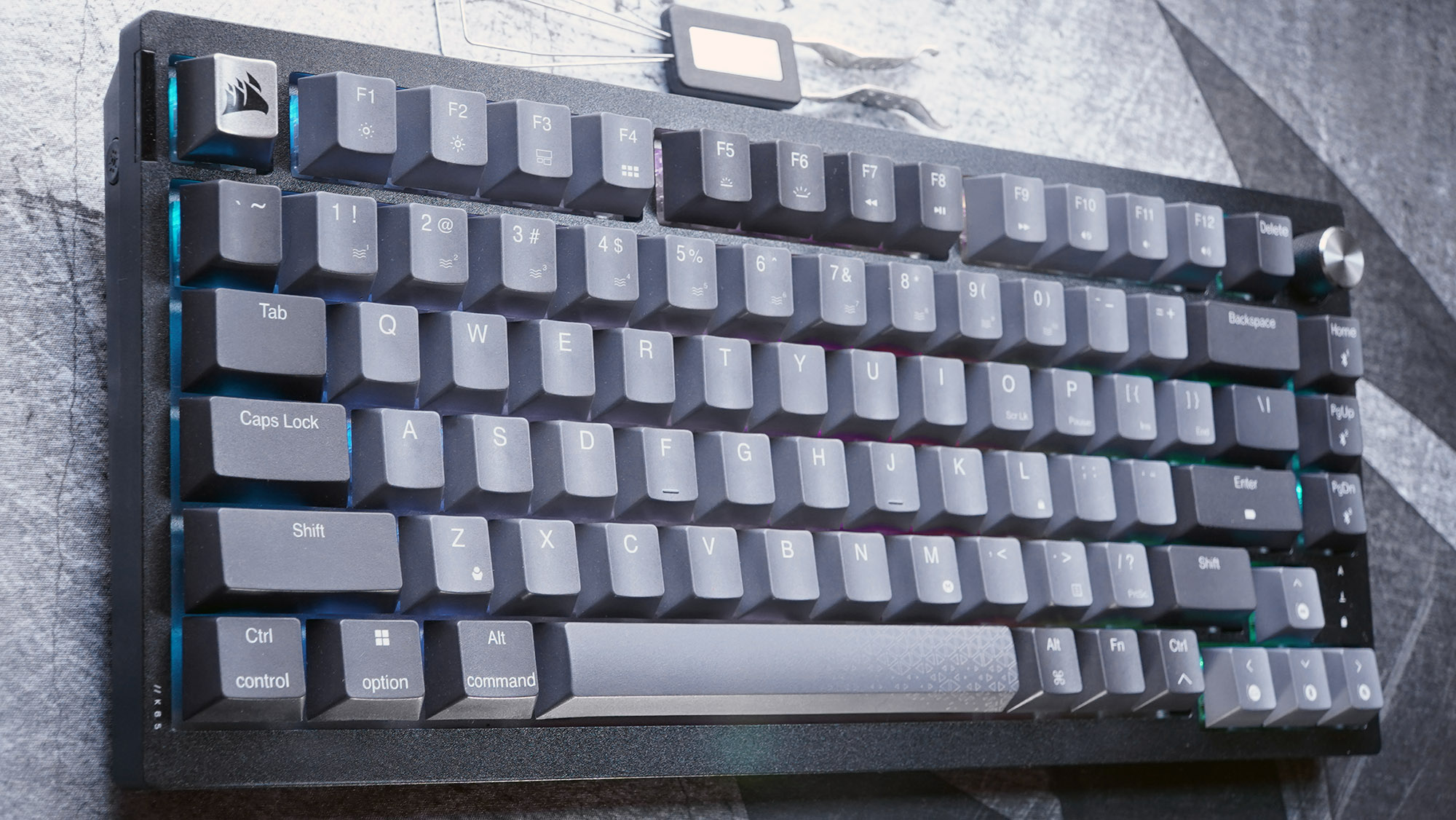
Pros
- Solid hardware
- Great value for wireless
- Tons of customization options
Cons
- No wrist rest
- slightly awkward default layout
Why I like the K65 Plus Wireless
Corsair has been improving its designs for the last couple of years, incorporating more premium features and customization options. And it all comes together in the vastly redesigned K65 Plus, and does so at a shockingly low price.
This keyboard combines the popular 75% form factor, high-speed, multi-device wireless, high-quality switches, and hot-swappable key sockets, with Corsair’s typically good gaming pedigree. The result is a keyboard that does a lot, for a lot of users, for a relatively low price.
While the K65 skips a couple of exotic features like adjustable actuation or an OLED screen, and it doesn’t include a wrist rest in the box, it nails just about every other facet of design. It’s simply the best gaming keyboard you can get at the moment.
Who should buy the K65 Plus Wireless
Anyone who wants a high-quality keyboard with tons of options for customization, both hardware and software, will be pleased with this design. It also has some excellent bonuses, like PBT keycaps and a dedicated button for turning RGB on (or off, if you want maximum battery life).
The 75% form factor isn’t for everyone — you’ll have to look elsewhere, or wait for Corsair to offer more models, if you want a different format. It’s also considerably less “flashy” than other gaming keyboards, and doesn’t offer the heft and quality of a metal body
G.Skill KM250 RGB – Best value gaming keyboard
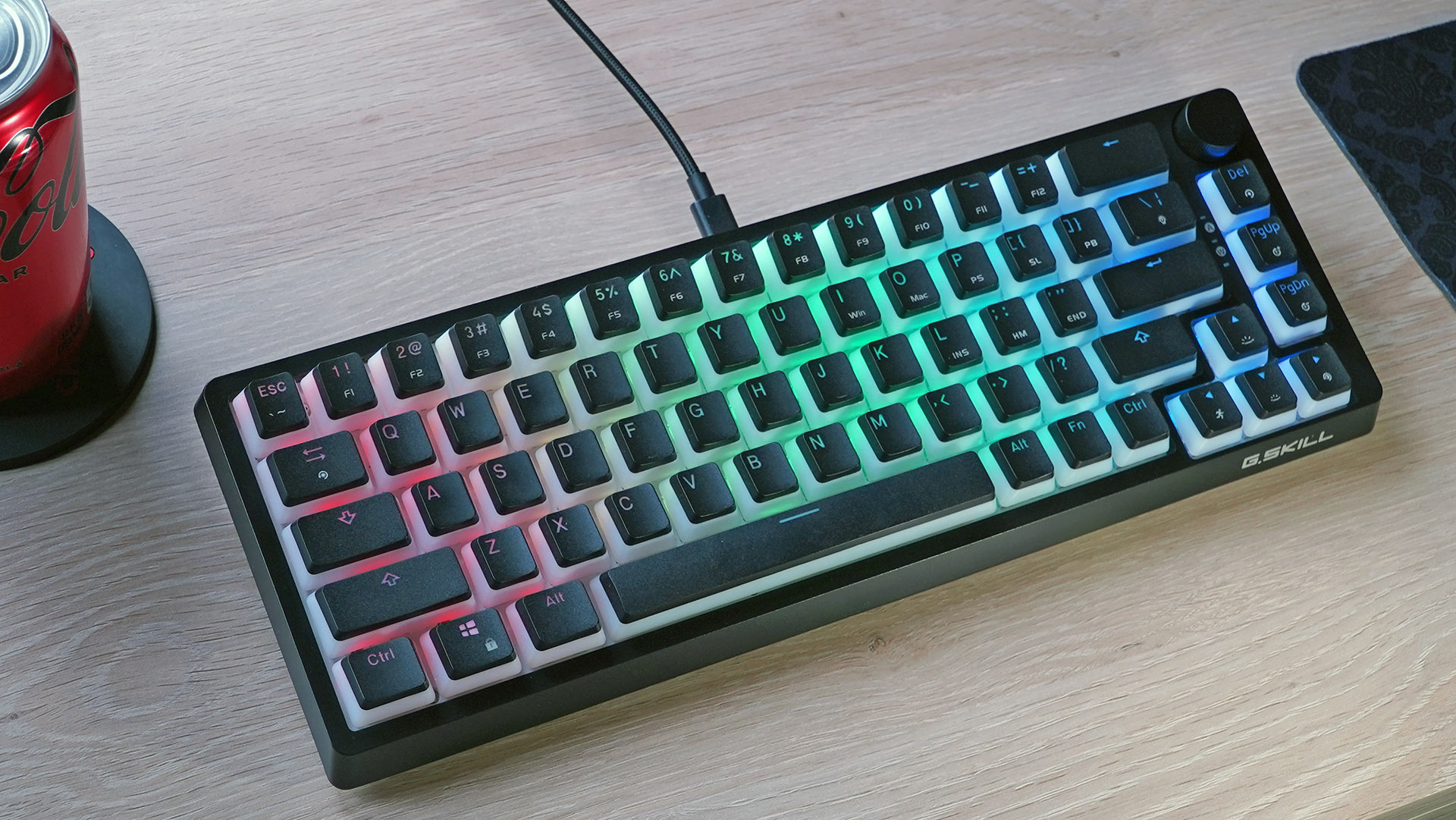
Pros
- Incredible value
- PBT "pudding" caps
- Great layout
- Hot-swap switch sockets
Cons
- No programming options
Why I like the KM250 RGB
It’s been almost a year since this little board took our coveted value pick, and nothing has managed to unseat it yet. With high-quality parts, hot-swap functionality, a smart layout, and fantastic typing and gaming, you just can’t beat it for the price. That price is under $50 at most retailers, an absolute steal even for a non-mechanical keyboard.
The KM250’s Kailh BOX switches, stylish “pudding” keycaps that let the RGB shine through, and excellent sound dampening in its body are particular highlights. In fact, it has almost all of the features that the K65 Plus above has, at a third of the price…with one big exception.
Who should buy the KM250 RGB
Anyone who needs a great keyboard at an even better price will be more than pleased with G.Skill’s offering. It’s also a fantastic place to start if you’re looking to dip a toe into mechanical keyboards, thanks to its mostly standard layout and hot-swap switches. Heck, at this low price, it even makes a great backup keyboard.
The only downside is that there’s no way to program it, either for its own primary layout or for different layouts tied to specific PC games. But that’s a pretty fair tradeoff for the rest of its excellent features and design at this price.
Alienware Pro Wireless – Best gaming keyboard for travel

Pros
- Unique curvy body
- Great switches
- Dual wireless
Cons
- Expensive
- Janky software
- No wrist rest
Why we like the Alienware Pro Wireless
Dell’s Alienware sub-brand has made gaming keyboards for a long time, but they’ve really stepped it up for this wholly new design. The Pro Wireless incorporates feedback from pro gamers and custom keyboard fans in order to deliver a solid, compact product with great components.
It’s that compact, curvy body that gives it our nod for the best travel board. In addition to an incredible battery life (turn off the lights to make the most of it), the compact size and shape of the board means it’s practically begging you to throw it in a backpack for gaming on the go.
It doesn’t hurt that the Pro Wireless offers both 2.4GHz and Bluetooth multi-device wireless, with a USB-C dongle that’s both tiny and perfect for the latest gaming laptops or even mobile devices.
Who should buy the Alienware Pro Wireless
If you need portability, wireless options, and battery life over all other features, Alienware’s newest design fits the bill. While its software leaves a lot to be desired, once you get over its foibles it makes the best traveling companion of any gaming keyboard to date, easily fitting into almost any space without sacrificing capability.
Alienware demands a pretty penny for its flagship model, so if you’re looking for a bargain you might want to look elsewhere.
Razer Huntsman V3 Pro keyboard – Best analog gaming keyboard
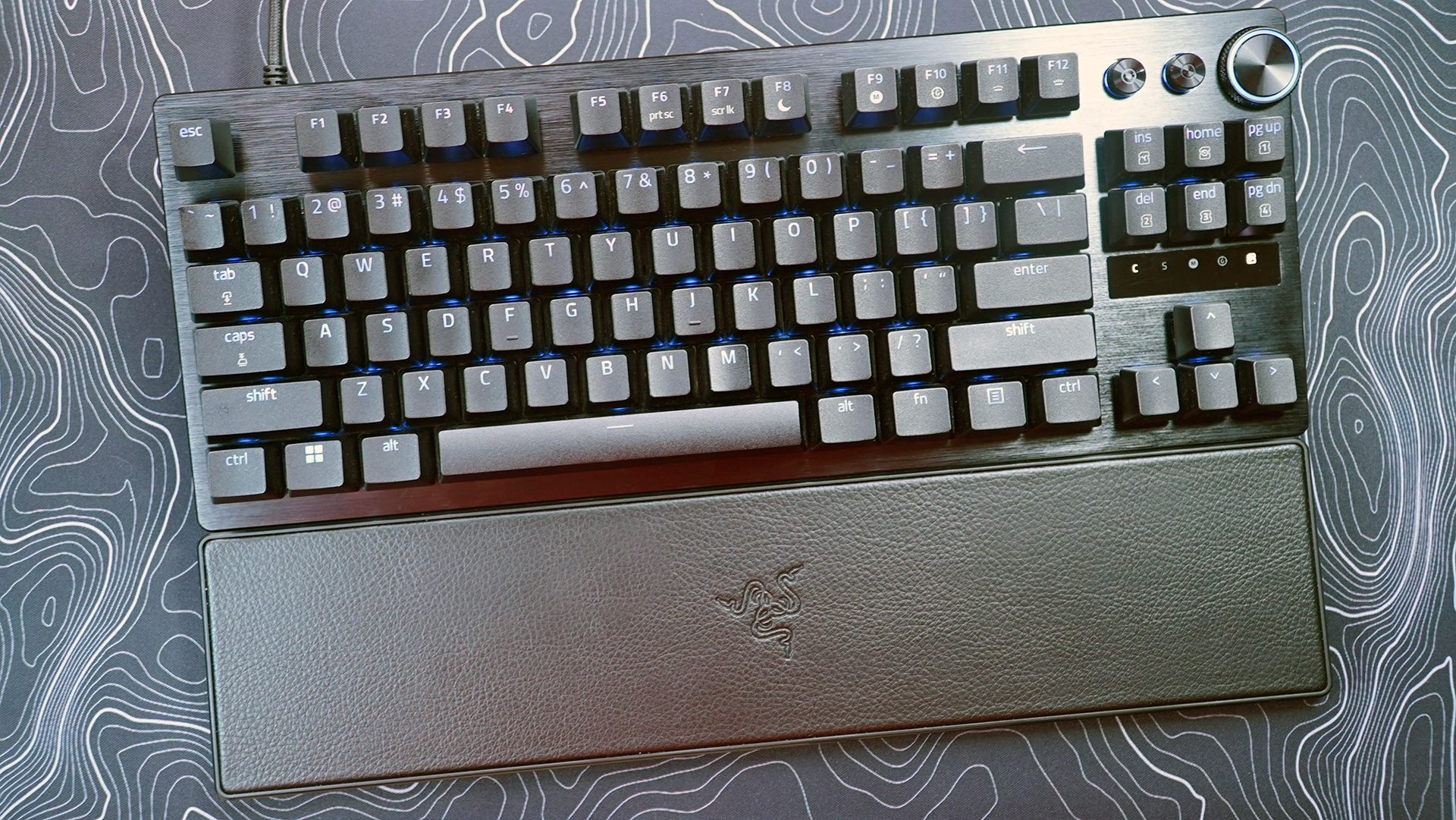
Pros
- Excellent software customization
- Great controls for analog input
- Easy layout swapping
Cons
- Expensive
- Typing is loud and wobbly
- Hard wrist rest
Why I like the Huntsman V3 Pro
“Analog” keyboards, those which can adjust the actuation point of their keys by software, are a rare and expensive breed. Razer has the best of the lot by a whisker, thanks to its excellent software and some thoughtful design. Pro gamers — or gamers with “pro” esports aspirations — need look no further than the Huntsman series.
This flagship of Razer’s keyboard stable stands a bit above the rest thanks to its complex Gen 2 optically triggered switches and the Synapse software package. But even without software, the onboard LED indicators can let you quickly switch between light and heavy actuation, or program a quick macro.
With otherwise excellent design, not to mention an included wrist rest, the Hunstman V3 Pro is the best in a small field of competition. It’s available in full size, TKL, and “mini” 60% variants.
Who should buy the Huntsman V3 Pro
The Huntsman V3 Pro is for those who want the ultimate in gaming keyboard capability. With extra functions like Rapid Trigger and analog-style movements, the Huntsman can do tricks that lesser designs simply can’t manage. And it has the price tag to prove it.
Those who don’t need these very niche capabilities, who prefer hardware customization over software with hot-swap switch sockets, or who simply want to make do with a more sober budget should look elsewhere.
Lemokey L3 – Best alternate gaming keyboard
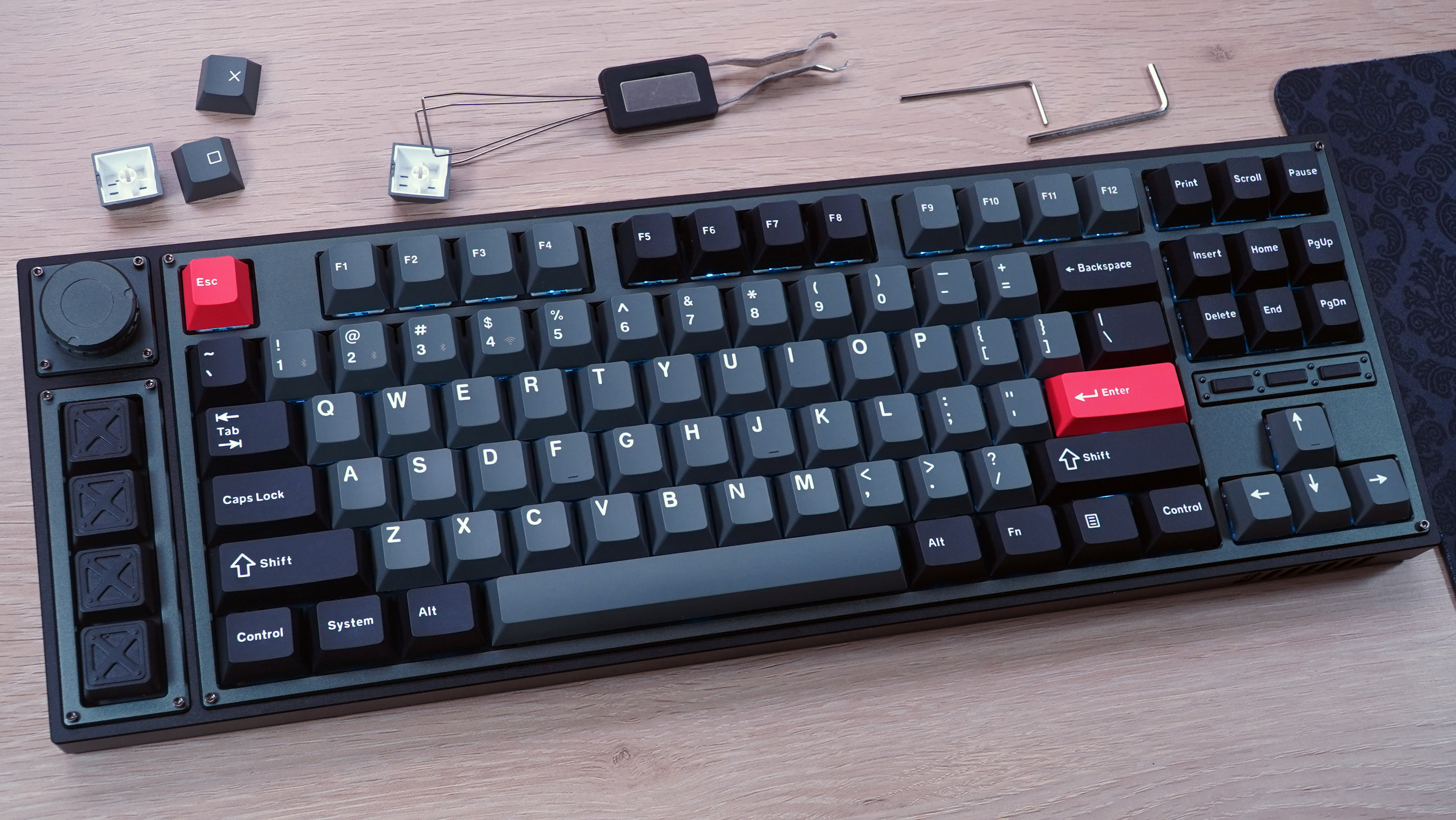
Pros
- Typical Keychron build quality
- Bluetooth and 2.4GHz wireless
- Lots of extras
Cons
- No per-game programming
- No adjustable typing angle
- Takes forever to disassemble
Why I like the Lemokey L3
You might call the Lemokey L3 a more high-class kind of gaming keyboard, thanks to a design borrowed from parent company Keychron’s Q series. It has all the highlights of those excellent designs, like a heavy all-aluminum body and PBT keycaps, in a more gamer-focused package.
With Bluetooth and 2.4GHz wireless, plus a few macro buttons on the side with plenty of alternate keycaps, the Lemokey looks a little more at home in a “serious” office setup.
It’s no slouch for gaming thanks to speedy linear switches, though programming is limited to one (very flexible) custom layout. If you want per-game profiles, you have to look elsewhere.
Who should buy the Lemokey L3
The Lemokey L3 is a fantastic value considering everything that it offers, but it’s still a very premium design, and would also double as a pretty good doorstop. Gamers who want a ton of flexibility in terms of hot-swap switches and keycaps, plus wireless capabilities, will be well-served here.
Even so, it’s a pretty pricey keyboard that sacrifices the more game-focused driver software of other boards on this list. If you want dedicated game profiles or a more “flashy” look, you’ll be better served by Corsair or Razer.
Dygma Raise – Best split gaming keyboard
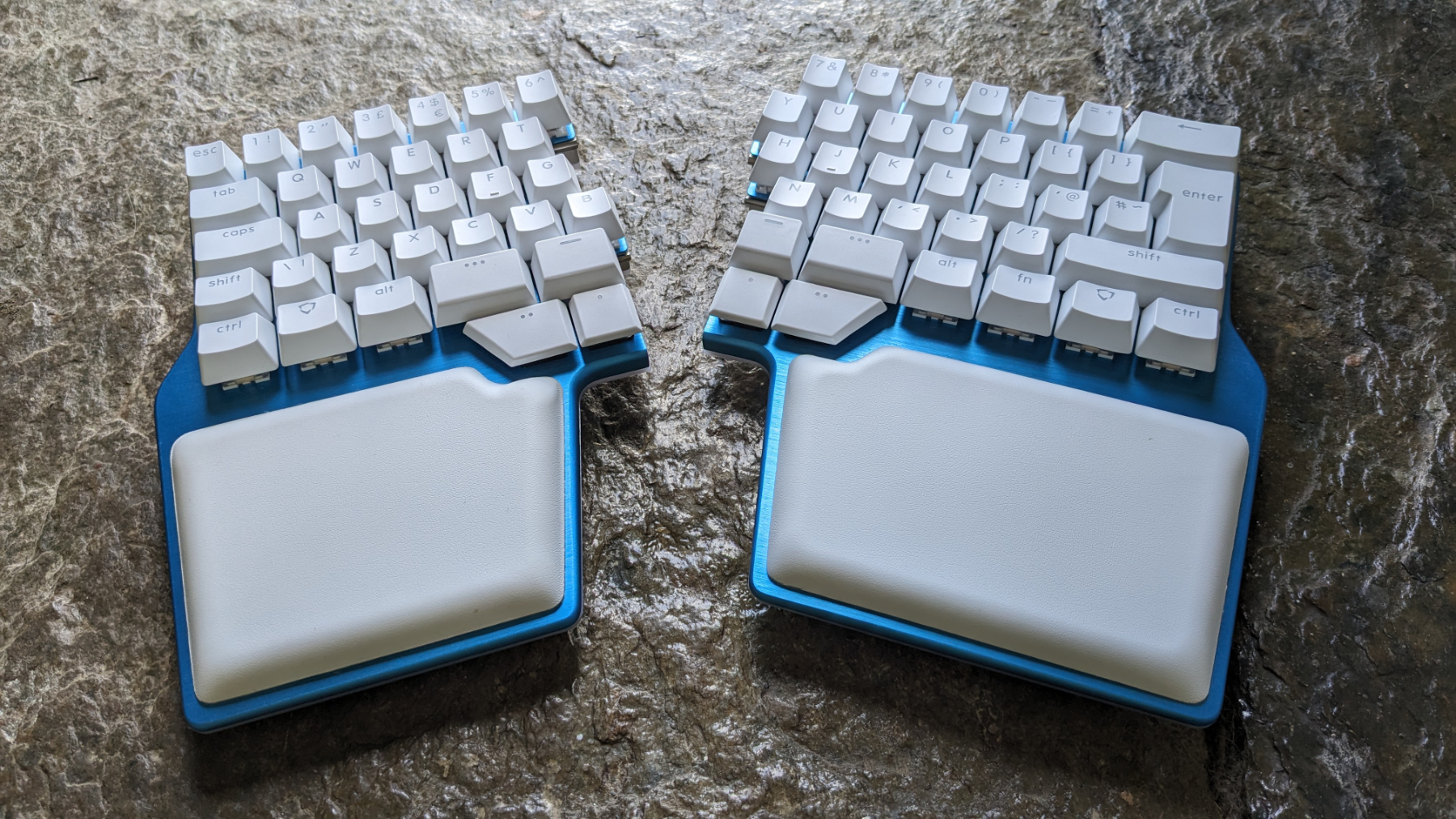
Pros
- Very comfortable typing experience
- Hugely customisable
- Great software
- Takes pressure off of hands, wrists and shoulders
Cons
- Expensive
- Sharp inclined positions are not comfortable
- Takes time to relearn typing positions
Why I like the Dygma Raise
Gamers who need a split ergonomic layout don’t have a lot of choices available to them. The Dygma Raise is the best of this very limited selection, offering a mix of customization and ergonomic options that will delight those who can afford it.
With fully split halves and a tenting kit that can give you extreme angles no standard keyboard can reach, the Raise (get it?) appeals to gamers and mech fans who need extremely specific angles for comfort or health reasons. And its custom software is no slouch, either.
Who should buy the Dygma Raise
If you demand the absolute best in both gaming performance and ergonomic flexibility, there’s no substitute for the Raise. Adding on extras when ordering ups the price, and the capability.
But unless you absolutely need the latter, there are far cheaper options in the gaming category.
FAQ
What’s the difference between a gaming keyboard and a regular keyboard?
Of course you can play PC games on any keyboard, assuming they were designed for it and not a controller. What separates a regular keyboard from a “gaming” keyboard is its intent—gaming keyboards are designed for speed and comfort across long play sessions. While “comfort” is subjective, and somewhat limited in making a gadget that conforms to standard typing, speed is readily quantifiable.
There are a couple of specific ways of measuring speed. One is the latency, the time it takes for a key press to translate into an action on your screen. Normally this is the relevant character appearing in a text window, but for a game it’s a sword swing, a foot movement, a grenade toss, a special ability activated. Gaming keyboards have special hardware that can minimize this latency: gold-plated connections on a USB port, for example.
The easiest way to reduce latency is to increase the amount of times the keyboard’s circuit board checks for key presses. This is called the polling rate, expressed in hertz. A standard keyboard has a polling rate of 100 to 200Hz, checking every tenth of a second or so. A gaming keyboard might have a polling rate of 1,000Hz or more—typically so fast that even the fastest human reflexes won’t be able to spot any gap in between a key being pressed and its relevant action on screen.
Are mechanical keyboards good for gaming?
Yes—if it’s the right mechanical keyboard. While any mechanical keyboard can be used for PC gaming, just like any standard keyboard, most gamers prefer a specific kind of switch. Linear switches, with a smooth action from zero pressure to the point where the switch “bottoms out” and can’t be pressed down further, allow for each key to be depressed faster and return to its resting position faster, too. Tactile or Clicky switches, while excellent for typing, are a bit slower and not preferred for gaming.
Cherry MX Red switches are the go-to choice for mechanical keyboards designed for gaming. There are tons of varieties, in a ton of colors that might not correspond to the actual properties of the switch itself. Some have a higher actuation point (the point in the key travel at which the keyboard registers a press), or lighter springs for a softer touch, or even less key travel to shorten the distance between pressing the key and bottoming out by a few millimeters. Some fancy “silent” switches are much quieter than normal ones.
But the important part for most gamers is that Linear switch type for smooth, fast presses. Unless your tastes are very unconventional, you want Linear switches for gaming, not Tactile or Clicky.
Are wireless keyboards good for gaming?
Yes! Even before modern wireless gaming keyboards arrived on the scene about 10 years ago, most keyboards using standard dongles and RF connections were fast enough to beat gamer reflexes. More specialized models make this wireless connection even faster, as quick as one-thousandth of a second—again, far faster than any human being can tell, and essentially identical to the speed of any wired connection.
There is an exception. Many wireless keyboards use Bluetooth, and that’s not ideal for gaming. Bluetooth is just slow enough that a gap between the key press and the action on screen is noticeable, even if you don’t have super-human reflexes. And it’s also on a very crowded wireless spectrum, so Bluetooth accessories are more prone to interference.
Even if your wireless gaming keyboard offers Bluetooth as a multi-device pairing option, you should go with the RF USB connection whenever you have the option.
Do gaming keyboards need RGB lights?
No. But they’re fun, aren’t they?
RGB lights can be programmed to indicate specific key bindings, and some driver programs even include custom decorative patterns for specific games. But since you’ll be looking at your monitor and not your keyboard most of the time, the lights are basically just for show, no matter what they happen to be doing. And if you’re not a fan, you can always turn them off (which can save a huge amount of battery life on wireless keyboards).

